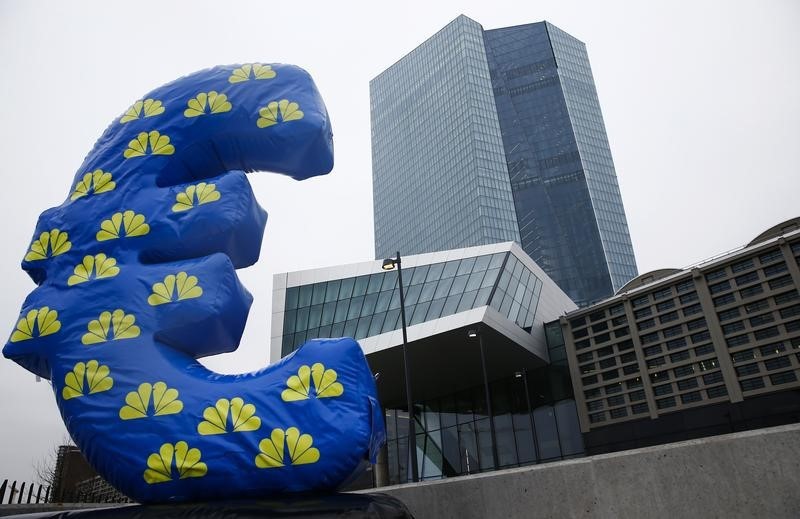BRUSSELS (Reuters) - Euro zone consumer prices eased year-on-year in March as expected, data showed on Tuesday, but the decline was small, indicating price declines bottomed out already in January and could start rising again soon.
The European Union's statistics office Eurostat estimated that consumer prices in the 19 countries sharing the euro fell 0.1 percent year-on-year this month, compared with a 0.3 percent drop in February and a 0.6 percent fall in January.
As in previous months, the decline was mainly driven by a steep fall in the prices of energy, which was 5.8 percent cheaper in March than a year earlier.
Core inflation, which excludes the volatile components of energy and unprocessed food costs, was 0.6 percent year-on-year, down from 0.7 percent in February and the same as in January.
The bottoming out of price falls is likely to be welcome news for the European Central Bank, which wants to keep inflation below, but close to 2 percent over the medium term. It started printing money in March to inject more cash into the economy and make prices rise again.
In another positive sign for the euro zone economy, Eurostat said euro zone unemployment fell to 11.3 percent of the workforce in February from an upwardly revised 11.4 in January -- the lowest rate since May 2012.

Eurostat said there were 18.204 million people without jobs in the euro zone in February, 49,000 people fewer than a month earlier.